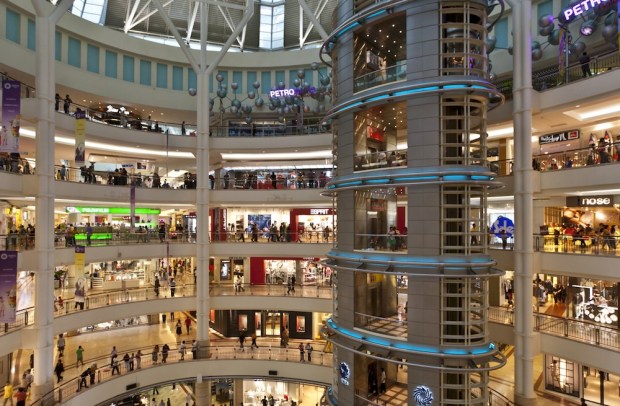Tommy Hilfiger’s Advice On How To Save The Mall

While eCommerce has done plenty of damage to brick and mortar stores, Tommy Hilfiger believes the shopping mall can survive — as long as the brand is “phenomenal, exciting and offer great experiences.”
With big department stores like JCPenney and Macy’s closing down hundreds of locations, some experts have started to question the future of shopping malls. In Q1 this year alone, more than 2,800 of these mall anchor stores have shut their doors. In facts, analysts are predicting 8,600 total will close by the year’s end.
In an interview with The Street, Hilfiger — who started his business at age 18 with $150 and a single store in his hometown of Elmira, N.Y. — says for shopping malls to survive and thrive, they need to give consumers a “memorable experience.”
“The mediocre or the less exciting malls will fall by the wayside,” he said. “The whole shopping experience has to become a big experience for the consumer. They want immediate gratification. They want to share whatever they’re doing with friends. They want authenticity. And, they want it to be as real and as exciting as possible.”
Hilfiger built his brand by catering to a younger demographic. And, even today, he believes that traditional brick-and-mortar stores need to win the approval of millennials and Generation Z to thrive.
“I’ve always been obsessed with keeping the brand young, because the youth will move the needle in society, whether it’s in fashion, art, music, entertainment, sports, celebrity,” Hilfiger said. “We, as a brand, have to stay young and fresh. You need to create a product that is different from the competition — and better. The youth has to embrace the brands, the retailers, the restaurants and even automobiles.”
And, while eCommerce wasn’t around when Hilfiger came on the scene, he knows exactly what he would do if he had to start out and compete against the likes of Amazon.
“I would go direct-to-consumer, do something disruptive and build a product that nobody else has,” Hilfiger revealed. “When I started, we didn’t have social media. It was word-of-mouth and building something experiential and fun and cool. They say ‘if you build it, they will come.’”